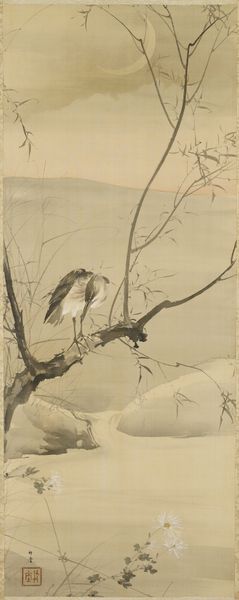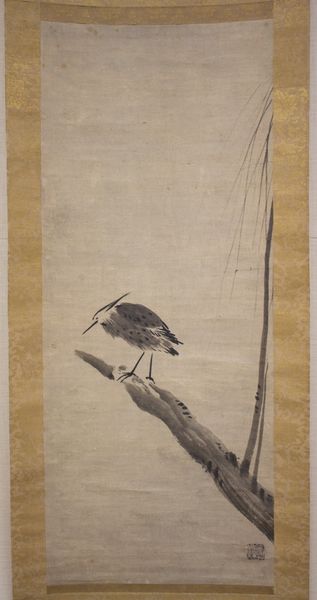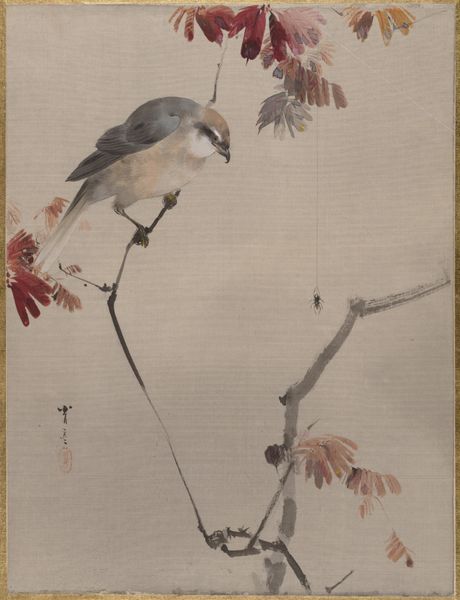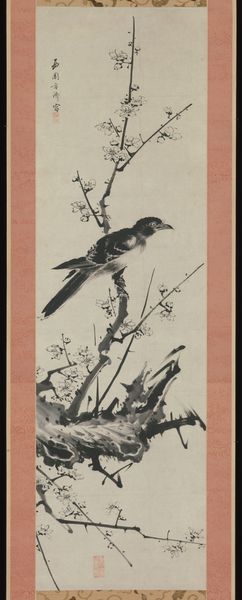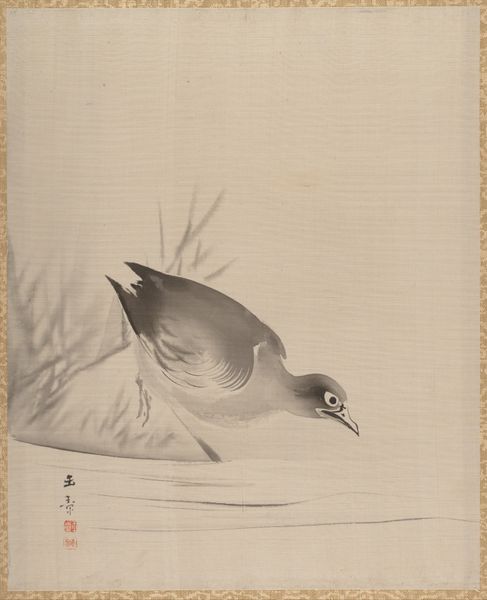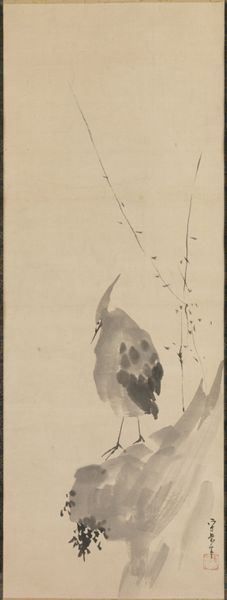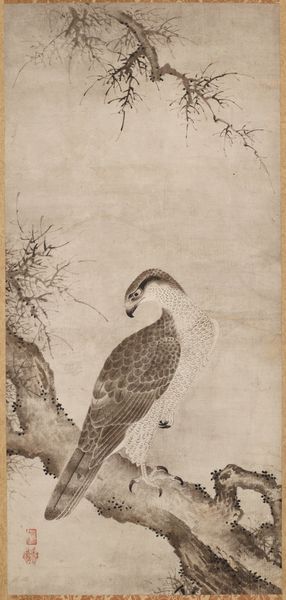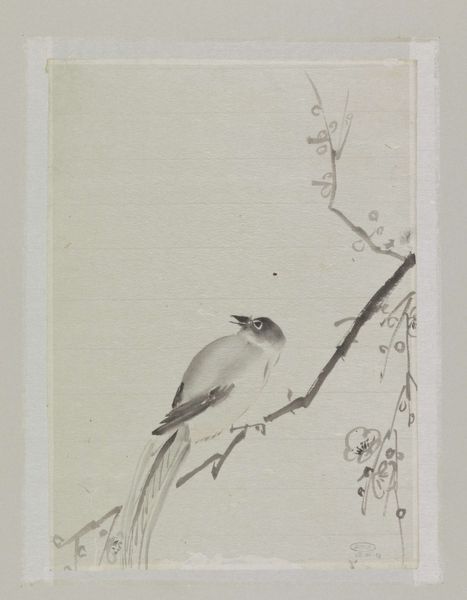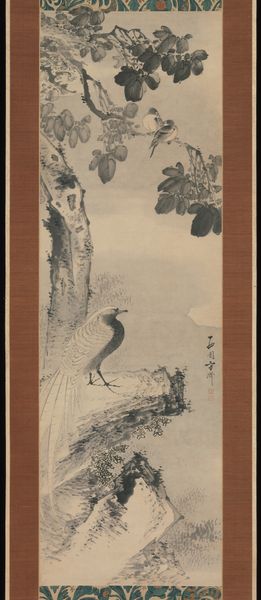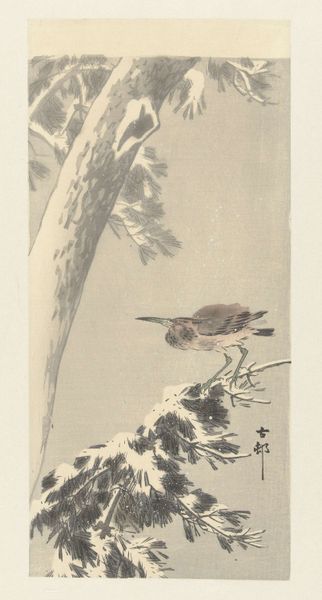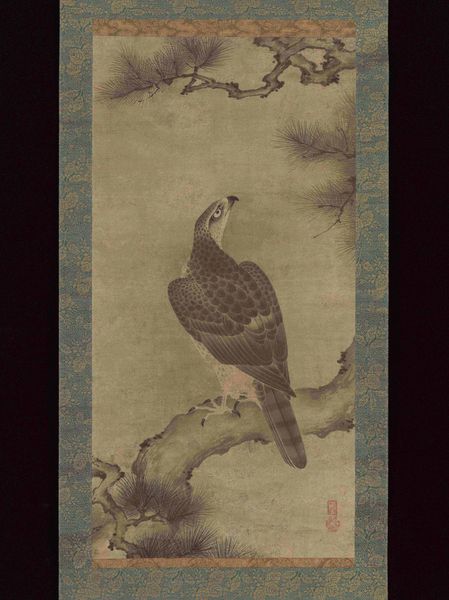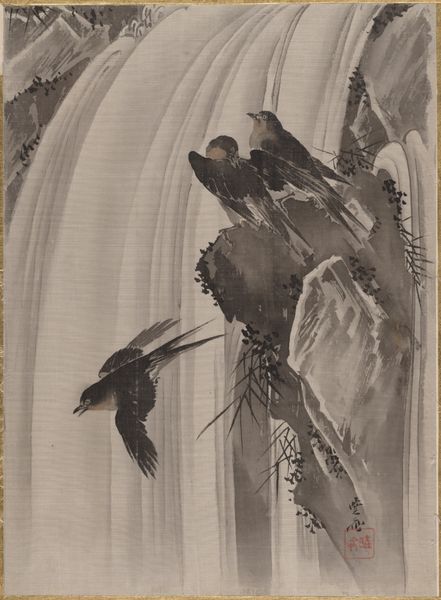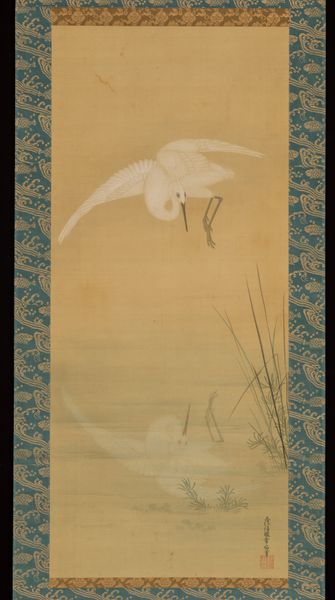![Swallow on a Lotus [right of a pair of Swallow and Heron] by Kano Tsunenobu](/_next/image?url=https%3A%2F%2Fd2w8kbdekdi1gv.cloudfront.net%2FeyJidWNrZXQiOiAiYXJ0ZXJhLWltYWdlcy1idWNrZXQiLCAia2V5IjogImFydHdvcmtzLzg4NDhmNzNhLWM5ZTktNGQ3ZC04YWQxLTA2MTI0NTJmMzEyZS84ODQ4ZjczYS1jOWU5LTRkN2QtOGFkMS0wNjEyNDUyZjMxMmVfZnVsbC5qcGciLCAiZWRpdHMiOiB7InJlc2l6ZSI6IHsid2lkdGgiOiAxOTIwLCAiaGVpZ2h0IjogMTkyMCwgImZpdCI6ICJpbnNpZGUifX19&w=3840&q=75)
Swallow on a Lotus [right of a pair of Swallow and Heron] late 17th-early 18th century
0:00
0:00
painting, watercolor, ink
#
organic
#
water colours
#
ink painting
#
painting
#
asian-art
#
ukiyo-e
#
watercolor
#
ink
#
yamato-e
Dimensions: 38 x 10 9/16 in. (96.52 x 26.83 cm) (image)63 3/4 x 11 1/8 in. (161.93 x 28.26 cm) (sheet)
Copyright: Public Domain
Curator: What a serene composition. It's deceptively simple, really. Editor: It feels… empty. Like there should be more to it. Is that the point? Curator: I’m seeing Swallow on a Lotus, one panel of a diptych attributed to Kano Tsunenobu, created in the late 17th to early 18th century. The paired work features a heron; here, ink and color wash delicately illustrate the swallow and lotus. What does that emptiness convey to you? Editor: Maybe loneliness, or isolation. This bird, perched above what looks like a half-formed lotus, isn’t it a symbol for being unseen and unheard, in a time when courtly art was dominated by depictions of noblemen and landscapes of wealth? Curator: The lotus itself resonates with layers of meaning – purity, enlightenment, rebirth. The swallow often symbolizes good fortune and marital bliss. Consider the pairing: two scenes representing very different perspectives. Tsunenobu allows the symbolic language of flowers and birds to carry cultural weight. What does this symbolism mean when there is, essentially, nothing else in the art? Editor: So, what good fortune or marital bliss is there for the marginalized? Or does Tsunenobu flip the expectation, using symbols ironically, offering commentary on the societal imbalance he must have seen? What happens when a bird symbolizing a home perches on a flower representing rebirth, and nothing comes of it? The swallow looks trapped, doesn’t it? Curator: Or contemplative, observing a slow blooming. Kano school prioritized rigorous training in traditional techniques, valuing not just accurate representation but also the embodiment of Confucian ideals of balance and harmony. Consider the vast negative space – it invites the viewer to complete the scene, to project their own understanding onto it. Editor: Perhaps. It makes me consider this art as a kind of social commentary veiled in artistic neutrality. Aesthetically, I can appreciate the minimalism and subdued colors; yet, I also can’t help but search for what's unsaid. It really puts into question, harmony for who? Curator: A compelling thought; thank you for sharing your unique reading of this work. Editor: Of course. The dialogue, I suppose, continues even after we walk away.
Comments
No comments
Be the first to comment and join the conversation on the ultimate creative platform.
